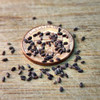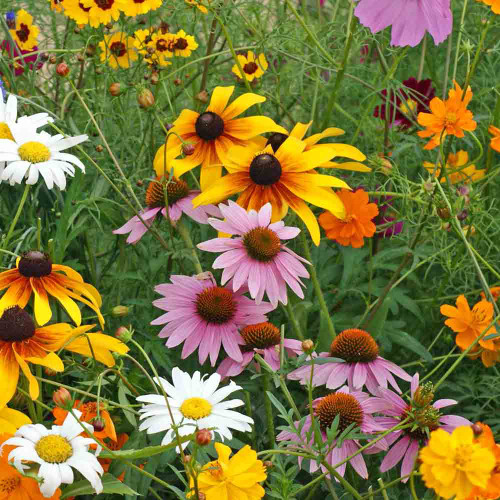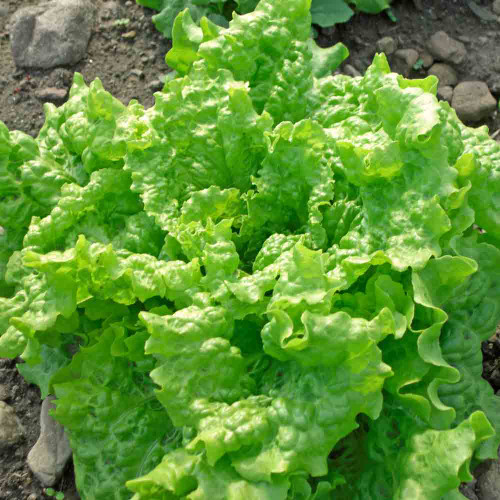Description
Nettleleaf Hyssop Seeds - Sweetly Aromatic Native Treasure
You’ll first notice the delicious mint-anise fragrance gently drifting on the breeze from profuse 6” long flower spikes packed with tiny blossoms ranging from white to rose or violet, then notice the riot of native bees, hummingbirds, and butterflies — including Monarchs — attracted while feeding on the rich, essential nectar source.
Robust and long-lived, Nettleleaf Giant Hyssop brings home gardens a majestic, towering herbaceous, intensely aromatic, perennial presence. A favored nectar source when planted along the migration route of western Monarch butterflies, it is often prioritized in habitat restoration projects for its reliable and abundant nectar.
Established plants bloom from late spring to late summer, announcing themselves with their signature minty aroma with notes of anise. Highly valued by Native Americans, wildlife, and pollinators, it has earned its place in many habitat restoration projects. Gradually spreading under favorable conditions without becoming invasive, Nettleleaf hyssop is often a valued garden citizen for several years.
Details
Agastache urticifolia is the scientific name of Nettleleaf Giant Hyssop, also known as nettleleaf horsemint, Giant Hyssop, and Horsemint Giant Hyssop. There are many varieties of hyssop — all in the mint family and identified by a square stem and bright green triangular-shaped leaves, often purplish near the base, that grow opposite each other with serrated edges. When crushed, the leaves give off a strong minty and anise aroma.
Depending on the conditions, plants can grow from 5-7’ tall and 2-3’ wide. They have a deep, thick, extensive fibrous root system, allowing them to thrive in various climate conditions. Each plant produces a profusion of flower spikes in bloom, often almost covering the plant. Each spike is densely packed with tiny flowers ranging from pink and purple to white, blooming from May through late September or early October, depending on the temperature, light, and elevation.
Nettleleaf hyssop is native to western North America, growing from northern British Columbia down to California and east to Colorado, but will happily grow in any climate where mint does well.
Multiple pollinator species are highly attracted to the multitude of fragrant blossoms, feeding on critical nectar while pollinating the flowers. Both partners benefit from this symbiotic relationship — hyssop flowers depend on outside pollination for seed production, while the pollinators depend on the nourishing nectar to thrive. Each flower can produce hundreds of seeds for wild birds to feast on.
Butterflies that love visiting include the Eastern Tiger Swallowtail, Callippe Fritillary, White-lined Sphinx, Milbert's Tortoiseshell, and the Monarch. Nettleleaf hyssop is the preferred food supply for at least three bumblebee species.
Because nettleleaf giant hyssop grows in poor soils, has moderate water needs, and attracts pollinators, it is desirable for water-wise native landscaping.
Uses
Historically, Native Americans used nettleleaf hyssop seeds and leaves for food and medicine. The seed heads were gathered just before they became brittle, allowed to finish drying, then ground and cooked into porridge. Leaves were used medicinally in cold and hot applications for internal and external uses.
The Gosiute tribe in Utah gathered nettleleaf hyssop seeds extensively. After drying, they ground the seeds into a meal and cooked them as porridge or cakes. The Okanagan-Collville tribes of Washington and British Columbia drank a strong infusion of the leaves to treat colds and put the strong-smelling leaves in babies’ blankets to break fevers. In the Great Basin region, the Paiute drank a cold water infusion of leaves to ease indigestion and stomach pains and a boiled infusion for colds. They mashed leaves into a poultice to treat swellings. The Shoshone used nettleleaf giant hyssop as a laxative or purging agent.
Beekeepers have found nettleleaf hyssop beneficial for their hives. During a one-year observation in Eldorado County, California, beekeepers harvested 100 pounds of surplus honey attributed to the heavy nectar from a large community of nettleleaf hyssop nearby. The surplus honey was judged to have a somewhat minty flavor, was equal or superior quality to normal production, and resisted granulating for several months after extraction.
Nettleleaf herbal tea is a popular way to enjoy its medicinal benefits. You can make your own horsemint tea by steeping the leaves in boiling water just as you would for other herbal teas. The flavor will be earthy with a hint of licorice and mint.
Planting Tip
Nettleleaf hyssop seeds germinate well with light and warmth to begin sprouting. Gently press the seeds into damp soil, avoiding covering the seeds. Keep the surface of the soil moist — you should see a slight damp spot on the pad of your finger after touching the surface of the soil — and warm, around 55º - 70ºF until the seeds begin germinating, usually around 14-28 days. Plastic wrap or a humidity dome helps retain moisture, especially in dry climates.
In cold weather climates, you may want to start seeds indoors and then transplant once the soil has warmed up. Gardeners in warm weather climates can direct sow the seeds outdoors in warm soil, protecting them from rodents and birds until they germinate.
Unlike some native seeds, no special pretreatment is needed to boost germination. Several native and restoration seed researchers note that nettleleaf hyssop is one of the easiest native plants to germinate in a controlled environment, such as a greenhouse or germination chamber.
Experiments at the Kew Royal Botanic Gardens in 2019 showed an almost perfect (98%+) germination rate with a light/dark cycle of 8/16 hours. Further experiments showed 100% germination with 68°F soil temperature and the 8/16 lighting schedule.
Surprisingly, cold stratifying the seeds significantly reduces the germination rate. The Corvallis Plant Material Center tested seeds stored at 75°F germinated at 90%, while seeds stored at 64°F germinated at 78%.
Growing Tip
Nettleleaf hyssop is hardy and adaptable to different conditions and in poor or marginal soil; however, it grows better in conditions similar to its natural climates — somewhat moist, well-draining soil with partial or part-day shade.
Consider planting it on the north side of your house or a shade structure in warmer climates or give it afternoon shade as with tomatoes.
Most wildlife ignore or lightly graze the hyssop, thought to be partly due to the anise and mint flavors.
Pollinators are essential for seed production of hyssop; they forage for nectar and spread pollen to the next flower and plant they visit. Multiple species of bumblebees play a large role in pollination while feeding on nectar.
Learn More
From the soil to the seed to the food you eat - we'll help you grow your best garden!














